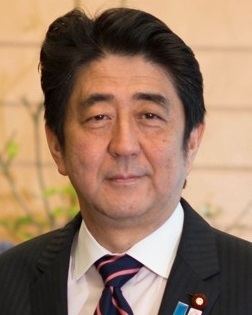July 21, 2013 2016 → 84 86 31 27 | 26 September 2012 25 December 2012 115 59 | |
 | ||
84
33.38% (Prefectural)
24.07% (National) 106
38.97% (Prefectural)
31.56% (National) | ||
The 23rd Elections to the House of Councillors (第23回参議院議員通常選挙, Dainijūsankai Sangiingiin Tsūjōsenkyo, "23rd regular/ordinary election of members of the House of Councillors") for the upper house of the National Diet, the legislature of Japan, was held on July 21, 2013. In the last election in 2010, the Democratic Party of Japan (DPJ) remained the largest party, but the DPJ-led ruling coalition lost its majority. The House of Councillors is elected by halves to six year terms. In 2013, the class of Councillors elected in 2007 was up.
Contents
Background
Japan had been in a "twisted parliament" situation since 2007, in which neither major party controlled both houses of the Diet of Japan, leading to political paralysis on a number of issues. Shinzo Abe led the Liberal Democratic Party to victory in the December 2012 general election after several years in the opposition. In campaigning to win control of the House of Councillors, Abe sought to resolve the "twisted parliament" problem for the next three years.
Just prior to the election, the U.S. dollar fell against the yen on expectations of more momentum for Prime Minister Shinzo Abe's aggressive monetary easing to fight deflation and boost growth for the export-dominant economy of Japan. Abe's LDP and its coalition partner, the New Komeito party, were tipped to win a majority and end years of parliamentary stalemate so as to enable economic reforms. However, his critics suggested that a strong mandate could even make Abe complacent.
Opinion polling for proportional seats
In the run up to the election, various organizations conducted opinion polls to gauge voting intentions for the 48 proportional seats. Polls are listed in chronological order, showing the oldest first.
Note:
Pre-election composition
Note: Composition as of July 13, 2013.
The ruling coalition won 76 seats and now holds a total of 135 seats in the House of Councillors ending the divided Diet.
Of the 31 single-member districts the LDP won 29; only in Iwate and Okinawa, opposition incumbents could hold their seats. The ten two-member districts elected ten LDP and ten opposition members; in several prefectures the second seat went to parties other than the DPJ: In Hyōgo to the JRP, in Miyagi to YP and in Kyōto to the JCP. Twelve of the 22 seats in three-, four and five-member districts went to LDP and Kōmeitō candidates. In the nationwide proportional race, the coalition parties won 25 seats, the opposition parties 23.
Results summary
Differences between party and parliamentary group membership in the post-election opening session: Two independents caucus with the NRP, President Masaaki Yamazaki (LDP – Fukui), Vice-President Azuma Koshiishi (DPJ – Yamanashi) and Keiko Itokazu (OSMP – Okinawa) are independents in terms of parliamentary group.
